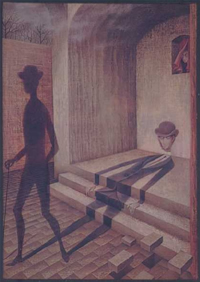 |
 |
|
| |
| Workshop on Exploring Physics with Reality
(W-EPR) |
| |
|
The objective of this workshop, as the very name implies, is to re-focus our attention into accepting that there are real physical processes behind all interactions in nature. In most cases, we can measure only the final outcome, the transformations that are experienced by the interactants under our observations. We can rarely observe the actual physical processes of interactions, especially, the history of the processes. This has always been left to our human interpretations, the conceptual power of imaginations and visualizations. However, understanding and visualizing the interaction processes embedded in fundamental physics theories help us emulate nature to create new technologies as has been demonstrated during the entire human history, and especially, during the last two centuries. |
 |
Fundamental physics is the key fountain of innovations. But we are experiencing a slowdown in the progress in fundamental physics during the last several decades and we have also failed to synthesize one common theory out of about half-a-dozen but separate set of theories, which are remarkably successful within their own limited domain. As if we have solved several separate little pieces of the vastly complex cosmic puzzle, but are failing to join them together since the complete “cosmic picture” pieces are not printed on their back! This implies the necessity of re-visiting our epistemology behind constructing physical theories.
|
| |
Supporting logic: A mathematical equation in physics, by definition, introduces logical and causal inter-relationship between some interactants that are within each others vicinity (locality) and are influencing each other by virtue of some natural force(s) that always have a finite range. Implicit in this predictive equation (theory) is the interaction process(es). There are at least four discernable logical steps behind each experimental registration. (i) Our instruments can register only the final quantitative transformations, rather than the history of the underlying processes that the interactants undergo. (ii) The transformations require energy exchange. (iii) The energy exchange takes place through a process guided by the interplay of rules allowed by the force of interaction. (iv) The force to be operative, the interactants must be local to each other, i.e., within the range of the operating force. So, when we fail to conceptually visualize the detailed processes of interaction behind some observations, we should not rush to make the working theory as complete by introducing ad hoc conceptual interpretations like non-causality, non-locality, etc., for they contradict the very logic-based foundation behind successful construction of our mathematical equations. Instead, we should take them as indications of limitations of our knowledge and the necessity of revisiting the original hypotheses, change them and/or introduce new ones leading to an improved theory that would be able to help us visualize the physical processes without contradicting the starting platform.
|
|
|
| |
|
|


